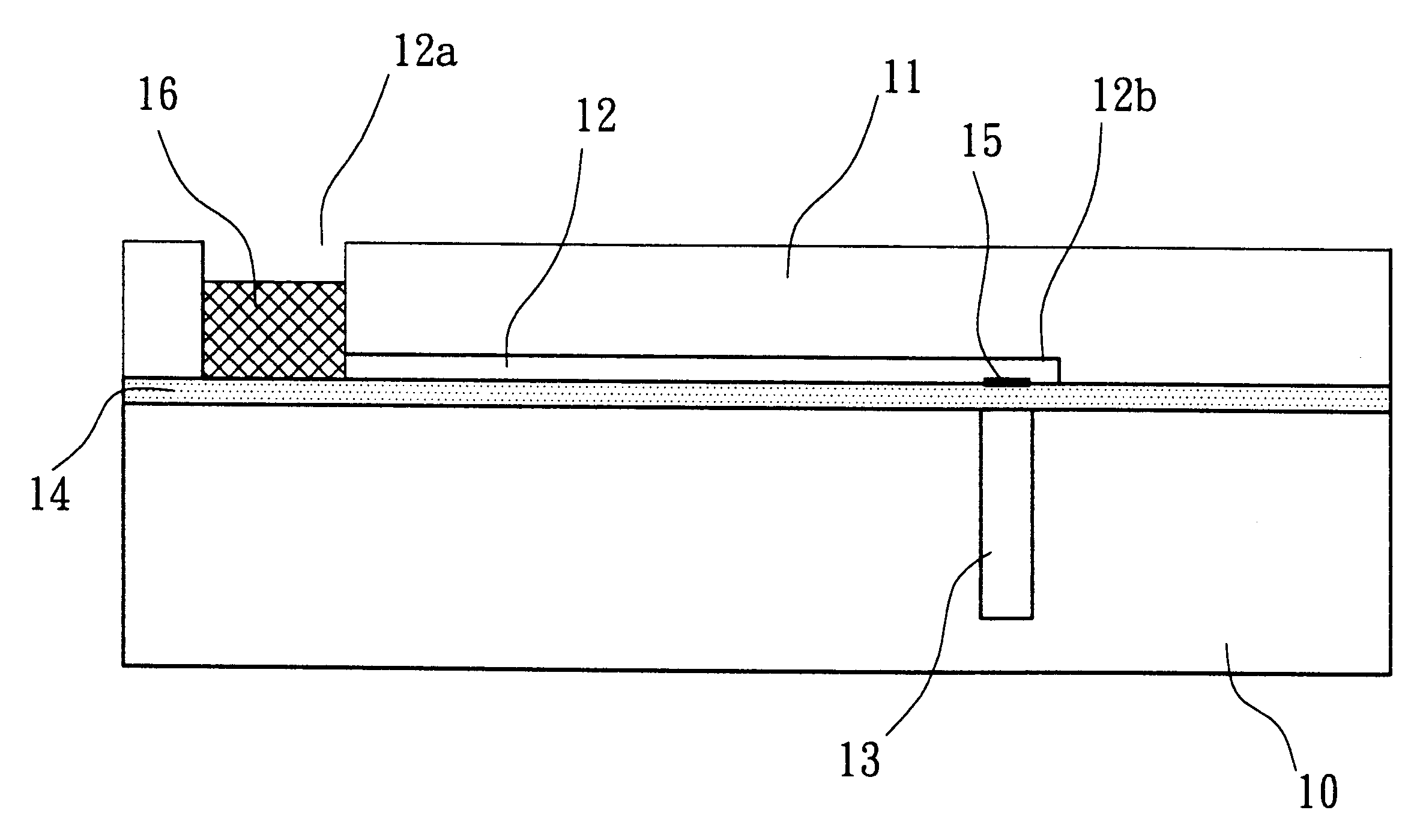Microfluidic actuator
a microfluidic actuator and actuator technology, applied in the direction of positive displacement liquid engines, machines/engines, laboratory glassware, etc., can solve the problems of inability to integrate devices into a complex microfluidic system, inability to perform this type of microfluidic sample processing technology, and the manufacturing cost of such a device must be extremely low, so as to achieve easy preparation and low cost
- Summary
- Abstract
- Description
- Claims
- Application Information
AI Technical Summary
Benefits of technology
Problems solved by technology
Method used
Image
Examples
embodiment i
pertains to a microfluid pumping mechanism employing the microfluidic actuator of this invention. FIG. 1 shows the cross sectional view of a microfluid pumping mechanism employing the microfluidic actuator of this invention prior to actuation and FIG. 2 shows its cross sectional view after actuation. As shown in FIGS. 1 and 2, the microfluid pumping mechanism comprises a bottom substrate 10 and an upper substrate 11, a microfluid channel 12 inside said upper substrate 11, a vacuum chamber 13 under said microfluid channel 12, a diaphragm 14 sealing said vacuum chamber 13, and a thin film resistor 15. 16 represents fluid filled into the microfluid channel 12. As shown in FIG. 1, the microchannel 12 has a sealed end 12b and an open end 12a and the vacuum chamber 13 is positioned adjacent to the sealed end 12a of the microchannel 12. Fluid 16, such as a liquid, is filled into the open end 12a of the microchannel 12. The open end 12a forms a reservoir for the fluid 16.
The vacuum chamber ...
embodiment ii
Embodiment II discloses a mechanism for proportionally mixing microfluidic samples using the invented microfluidic actuator. The microfluid mixing mechanism of this embodiment comprises in general a vacuum chamber 31, a mixing chamber 39 and at least 2 microchannels 32 and 33 connected to the mixing chamber 39, allowing liquid samples to flow into the mixing chamber 39. A schematic of one such proportional mixing system is shown in FIG. 3.
As shown in FIG. 3, the microfluid mixing mechanism also comprises an air reservoir 30 connected to the mixing chamber 39, a thin diaphragm (not shown in FIG. 3) separating the air reservoir 30 and the vacuum chamber 31, a thin film resistor 35 positioned on the this diaphragm, and two sample inlets of reservoirs 32a and 33a for filling sample liquids into the microchannels 32 and 33.
Before actuating the microfluidic actuator of this invention, sample liquids are added into the sample inlets 32a and 33a and fill the inlets 32a and 33a and a portion...
PUM
 Login to View More
Login to View More Abstract
Description
Claims
Application Information
 Login to View More
Login to View More - R&D
- Intellectual Property
- Life Sciences
- Materials
- Tech Scout
- Unparalleled Data Quality
- Higher Quality Content
- 60% Fewer Hallucinations
Browse by: Latest US Patents, China's latest patents, Technical Efficacy Thesaurus, Application Domain, Technology Topic, Popular Technical Reports.
© 2025 PatSnap. All rights reserved.Legal|Privacy policy|Modern Slavery Act Transparency Statement|Sitemap|About US| Contact US: help@patsnap.com



